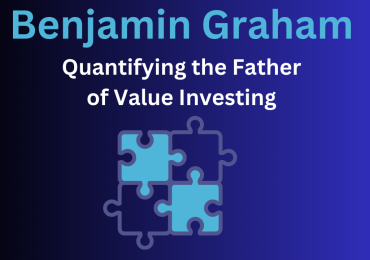Every other issue of The Validea Hot List newsletter examines in detail one of John Reese’s computerized Guru Strategies. This week’s issue looks at the Benjamin Graham-inspired Value Investor strategy, which is up more than 26% this year and has averaged annual returns of more than 16% since its July 2003 inception (vs. an average annual loss of 1.4% for the S&P 500). Below is an excerpt from the newsletter along with several top-scoring stock ideas based on the Graham investment strategy.
Taken from the June 26, 2009 issue of The Validea Hot List
Guru Spotlight: Benjamin Graham
Today, many investors look to Warren Buffett for advice about the stock market and the economy. But before he became one of the world’s richest men and greatest investors, there was someone whose investment advice Buffett himself cherished: Benjamin Graham. And Buffett was far from alone. Known as “The Father of Value Investing”, Graham inspired a number of famous “sons” — Mario Gabelli, John Neff, John Templeton, and, most famously, Buffett, are all Graham disciples who went on to their own stock market greatness.
So, just who was Graham? Born in England in 1894 as Benjamin Grossbaum (his family later changed its surname to Graham during World War I, when German names were viewed with suspicion), Graham built his reputation — and fortune — by using an extremely conservative, low-risk approach to investing. To him, preserving one’s original capital was every bit as important as netting big gains, and two factors from his early years may show why. The first was Graham’s own family’s fall from financial comfort to poverty not long after his father died when he was nine. The second involved his first major business venture, an investment firm he founded with Jerome Newman. Just three years after opening, the stock market crash of 1929 and the Great Depression arrived, and Graham’s clients, like just about everyone else, were hit hard, according to Graham biographer Janet Lowe. Graham worked without compensation for five years until his clients’ fortunes were fully restored.
Having lived through both his own family’s financial troubles and the market crash, it’s no surprise that the strategy Graham laid out in his classic book The Intelligent Investor was a conservative, loss-averse approach. To Graham, an investment wasn’t something that could be turned into quick, easy profits; anything that offers such “easy” rewards also comes with substantial risk, and Graham abhorred risk. True “investment”, he wrote, deals with the future “more as a hazard to be guarded against than as a source of profit through prophecy.”
In terms of specifics, Graham’s approach limited risk in a number of ways, and my Graham-based model lays out several of those methods. For example, one key criterion is that a firm’s current ratio — that is, the ratio of its current assets to its current liabilities — is at least two, showing that the firm is in good financial shape. The approach also targets financially sound firms by requiring that long-term debt not exceed long-term assets.
Two other criteria the Graham method uses to find low-risk plays: the price/earnings ratio and the price/book ratio. Graham wanted P/E ratios to be no greater than 15 (and, as another signal of his conservative style, he used three-year average earnings rather than trailing 12-month earnings, to ensure that one-year anomalies didn’t skew the ratio). For the price/book ratio, he used a more unusual standard: He believed that the P/E ratio multiplied by the P/B ratio should be no greater than 22.
Here are the current holdings of the 10-stock Graham portfolio:

Two types of stocks that you won’t find in the Graham portfolio are technology and financial firms. Graham excluded tech stocks from his holdings because they were too risky, and, while they’re not as risky today, I do the same. Financial stocks, meanwhile, aren’t explicitly excluded from my Graham model. But because of the low-debt requirements in this strategy, it’s nearly impossible for a financial firm to garner approval.
Since I started tracking my Guru Strategies almost six years ago, the performance of my Graham-based model has been rather remarkable. Even though the strategy Graham outlined is now 60 years old, it just keeps on working. My 10-stock Graham-based portfolio is up over 144% since its July 2003 inception, making it my best performer. That’s a 16.2% annualized return in a period in which the S&P 500 has lost an average of 1.4% per year. The model’s strict balance sheet criteria helped it avoid big losers in 2008, as the portfolio lost less than half of what the broader market lost, and it has rebounded big-time this year, gaining 26.4% compared to 1.9% for the S&P.
Those figures are a great demonstration of how successful stock investing doesn’t need to be incredibly complex or cutting-edge. You don’t need fancy theories or gimmicks; you just need to focus on good companies whose stocks are selling at good values. Do that, and you should produce some strong results of your own.








